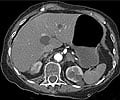
More than a thousand 11- to 16-year-olds took part in the survey, which unfolded in two waves, in 2008 and a followup in 2011.
In 2008, cigarette packets sold in Britain had large text warnings on the front and back.
In 2011, these were joined by anti-smoking pictures on the back panel of the pack.
Between two-thirds and three-quarters of respondents in the survey had never smoked.
Between 17 and 22 percent had experimented with cigarettes.
Advertisement
All were asked if they recalled the text message or the picture, and say which warning was likely to discourage them from smoking.
Advertisement
"Smoking kills" was remembered by 58 percent in 2008, while "Smoking seriously harms you and others around you" by 41 percent.
These rates fell to 47 percent and 25 percent respectively in 2011.
In contrast, the more specific text messages on the back of the pack were recalled by less than one percent of participants both 2008 and 2011.
Recall of the back-of-the-pack images was generally below 10 percent in both waves.
The exception was three scary pictures of rotting teeth, diseased lungs and neck cancer, for which recall increased between 2008 and 2011, reaching a maximum of 33 percent for the diseased lung image.
The research say the pictures had most effect on "never" or experimental smokers.
But the impact was negligible on regular smokers -- except to prompt some of them to buy special "hiding packs" to mask the nasty images.
"As warnings need to be salient to be effective, positioning pictorial warnings only on the less visible reverse panel limits their impact," says the study.
"While recall was high at both waves for pack-front (text) warnings, it was low -- below 10 percent -- for the pictorial warnings on the pack reverse, fear-appeal pictures aside."
The study, appearing in the specialist journal Tobacco Control published by the British Medical Journal (BMJ), also points to the "wear-out" factor, of text and visual warnings that go unchanged for years and fail to make an impact on regular smokers.
More than 60 countries now require pictorial health warnings on packs, according to the paper.
In five countries -- Australia, Brunei, Canada, Sri Lanka and Uruguay -- the law stipulates that they cover 75 percent of the main surfaces.
European Union (EU) countries must follow a 2001 directive that gives one of two general warnings covering 30-35 percent on the pack front, and 14 specific warnings, covering 40-50 percent of the reverse.
There are also 42 possible images that member states can use on the reverse of packs.
Less than half of the EU's member-states have adopted these pictorial warnings, and none has warnings covering 50 percent of the main pack surfaces overall, a guideline set by the UN's World Health Organisation (WHO).
Source-AFP












